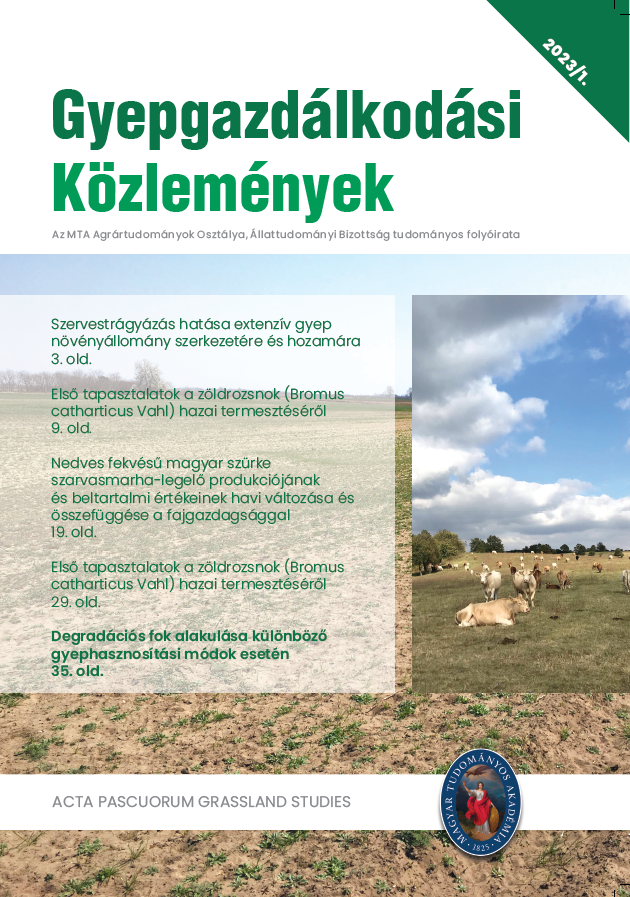Monthly changes in the production and content values of wet Hungarian gray cattle pasture and the relationship with species richness
Authors
View
Keywords
License

This work is licensed under a Creative Commons Attribution-NonCommercial-NoDerivatives 4.0 International License.
How To Cite
Abstract
Grassland management tests were performed on different grazing loaded gray cattle pasture and hayland areas 4 times (April, May, June, September) during the grazing season in Tapolca-basin. 5-5 pieces of 2×2 m samples were examined on each sample area, prepared according to the Braun-Blanquet method (1964) in April, May, June and September and with this, we also measured the amount of biomass and its content.
Based on results additional pasture had the largest gazing livestock carrying capacity but it had the weakest feed quality as well. During grazing season due to ongoing livestock grazing, species composition has changed the most in case of pasture and the number of species was the greatest here as well. Proportion of grasses declined in parallel with the amount of legumes, which grown till late summer.
Nutrient content of pasture forage was the most appropriate because of high crude protein and less crude fiber content. Grazing for 34 days/year was not enough in case of additional pasture where Festuca arundinacea had the largest coverage. This is reflected in low number of species richness and small nutritional values of sample areas. For sedge rich low-lying areas mowing utilization is the most effective.

 https://doi.org/10.55725/gygk/2023/21/1/13069
https://doi.org/10.55725/gygk/2023/21/1/13069